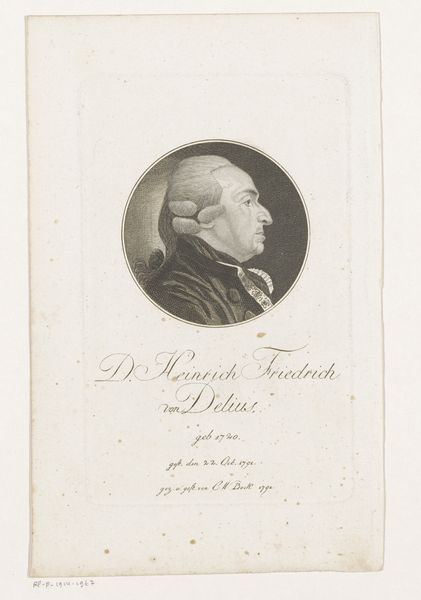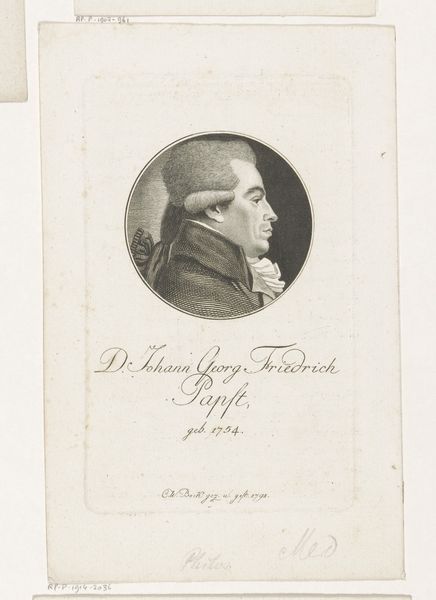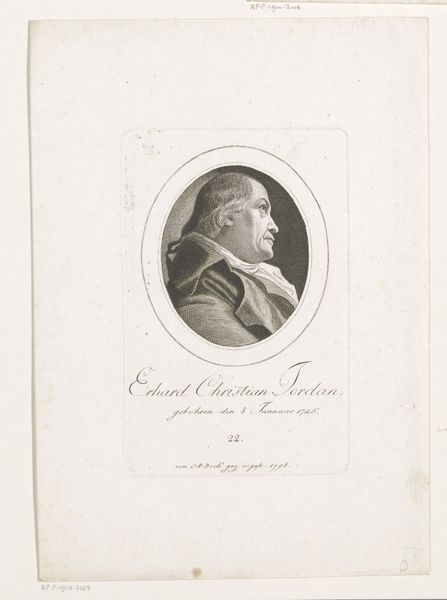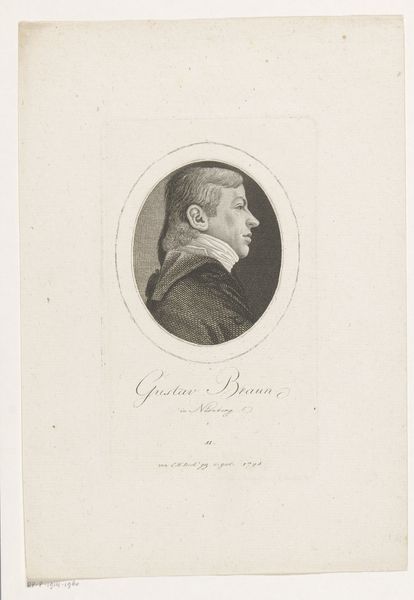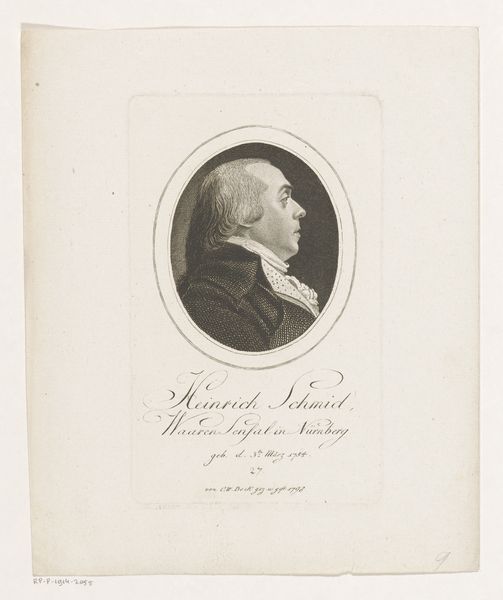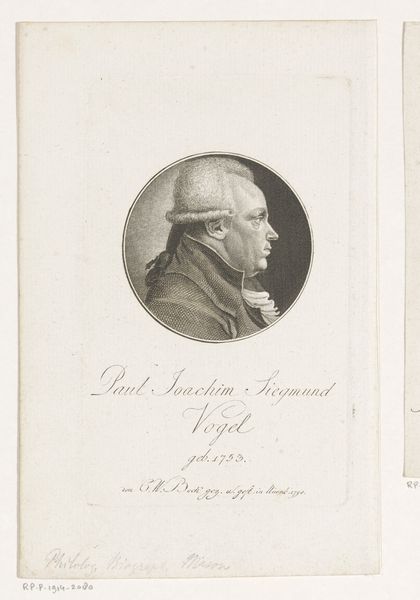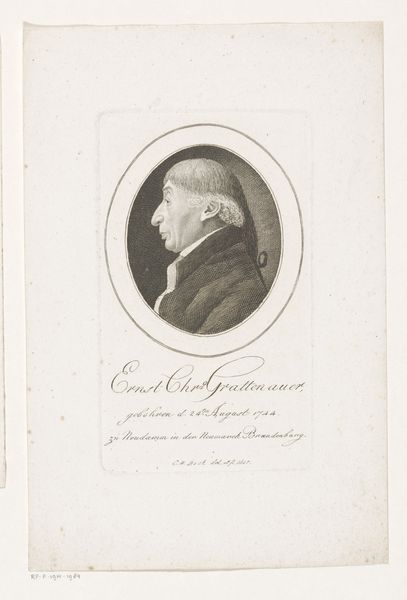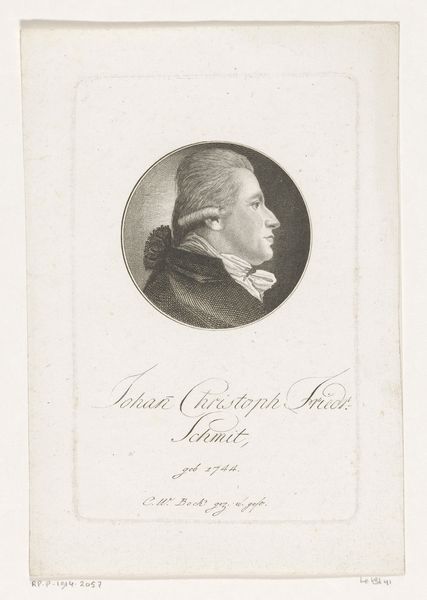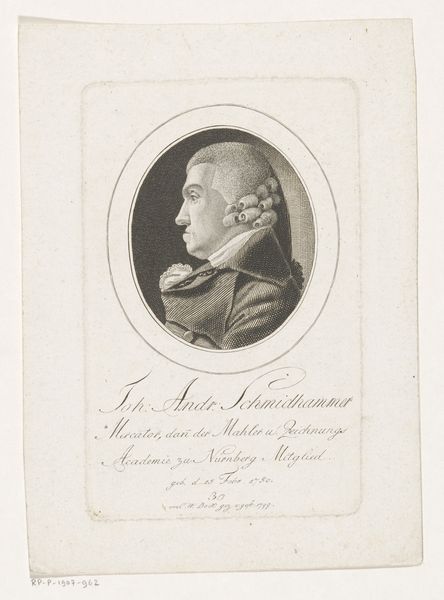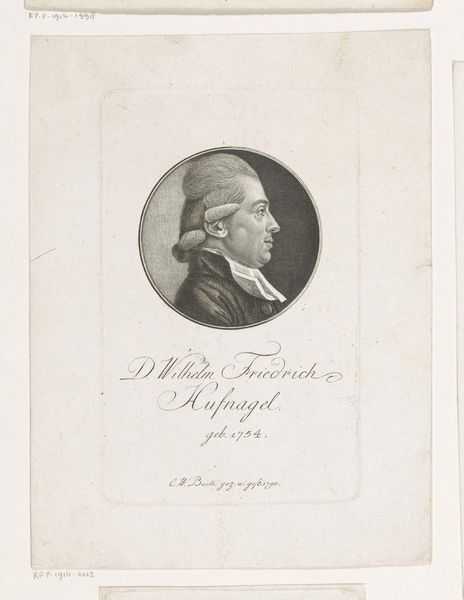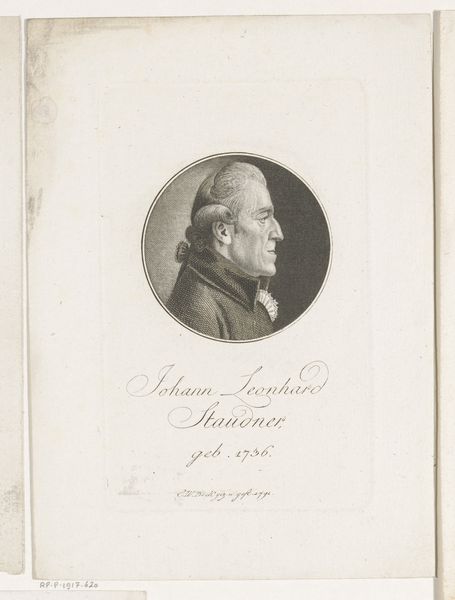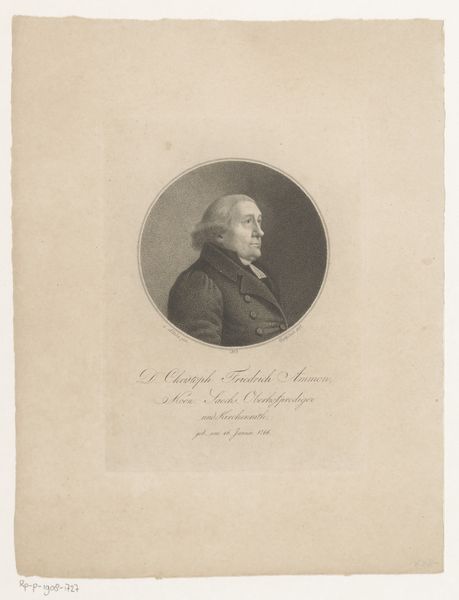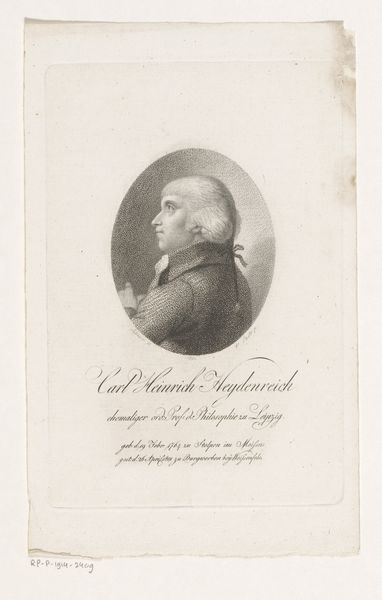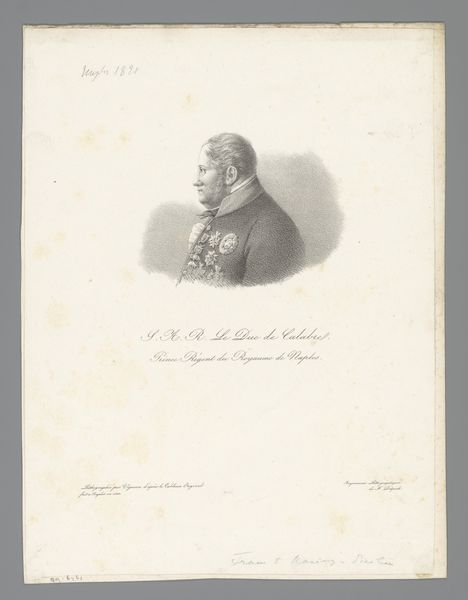
print, paper, engraving
#
portrait
#
neoclacissism
# print
#
paper
#
line
#
history-painting
#
engraving
Dimensions: height 145 mm, width 87 mm
Copyright: Rijks Museum: Open Domain
Curator: We’re looking now at a striking print from 1791, “Portret van Christian Friedrich Gluck,” held here at the Rijksmuseum. The artist is Christoph-Wilhelm Bock. It’s an engraving on paper. Editor: What jumps out at me is its air of crisp, almost clinical detachment. The tight, controlled lines give Gluck's profile this sense of being observed, scrutinized—like a specimen pinned to a board. Is that intentional? Curator: In part, yes. This is Neoclassicism in its purest form: the emphasis on line over color, the interest in ideal forms. Look at how Bock contains Gluck within that perfect circle; a device reinforcing the idea of order, rationality. Editor: Yet, I see a touch of vulnerability. Gluck’s gaze, though stoic, carries a certain…melancholy? Perhaps the print medium lends itself to an interpretation rooted in temporality. Curator: It's fascinating that you interpret it that way. The cross-hatching is beautifully executed but serves more of a technical, structural function. For me, that’s a nod to the Enlightenment project – the rational, precise recording of reality. Editor: Rationality can be confining, no? I almost want to grab a brush and daub some impressionistic swirls around him, let some chaos into that circle! But I can also admire the print’s exquisite rendering of fabric, that tightly wrapped hair, the subtle gradations of shade that give form to the composer's features. Curator: Precisely! Notice too the inscription, a clear articulation of Gluck’s identity; his very essence is distilled and presented as a rational data point. That’s Neoclassicism trying to make its mark, ordering and understanding the human condition through reason. Editor: Well, despite the chill of reason, I appreciate that the engraving on paper—a fairly accessible medium—gives us a humanizing glimpse of a historical figure. In a way, it almost renders him more tangible, more real than any oil painting could. Curator: I’ll concede that prints democratized portraiture. As a consequence, such portraits, regardless of their fidelity, had great rhetorical power in shaping public perception. In conclusion, this work offers a captivating tension between artistic expression, philosophical conviction, and its lasting material presence. Editor: Absolutely! It's as if the neat lines of rationalism couldn't quite contain the glimmer of a soul. Even in precision, something stirs.
Comments
No comments
Be the first to comment and join the conversation on the ultimate creative platform.
